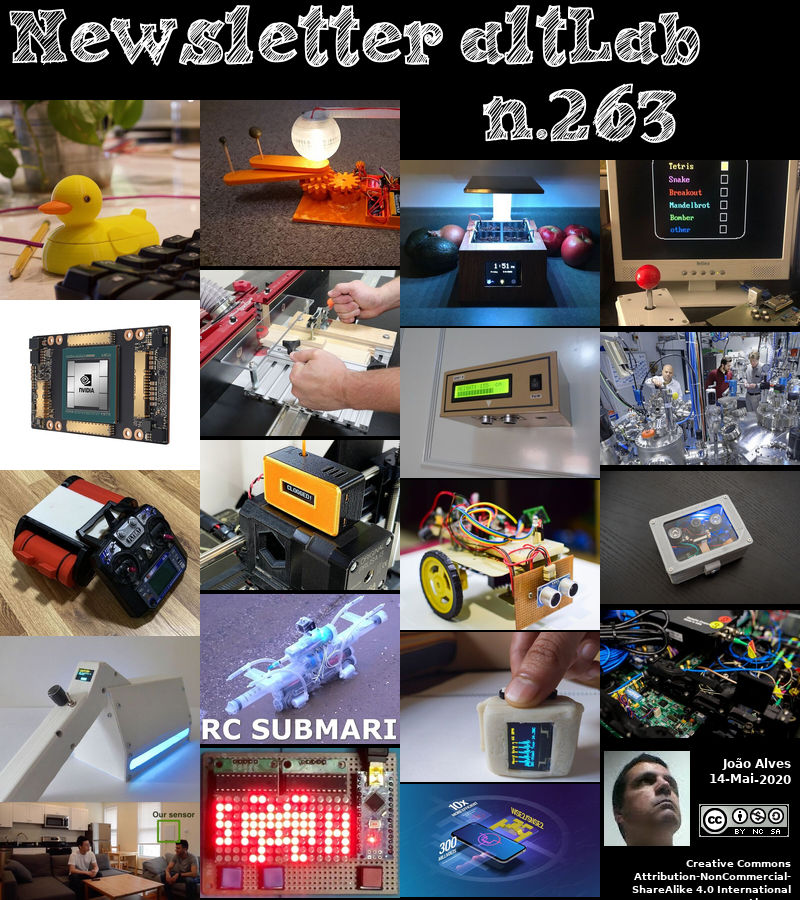2020-05-14 - Nº 263
Editorial
Esta é a Newsletter Nº 263 que se apresenta com o mesmo formato que as anteriores. Se gostar da Newsletter partilhe-a!
Todas as Newsletters encontram-se indexadas no link.
Esta Newsletter tem os seguintes tópicos:
Faz hoje anos que nascia, em 1925 o físico teórico israelita Yuval Ne'eman. Tendo trabalhado independentemente de Gell-Mann, mas quase simultaneamente (1961), ele desenvolveu um método de agrupamento de bárions de tal maneira que eles caíram em famílias lógicas. Agora conhecido como o Caminho Óctuplo, o esquema agrupava mésons e bárions (por exemplo, protões e neutrões) em multipletos de 1, 8, 10 ou 27 membros com base em várias propriedades. Ele foi chefe da comissão de energia atómica de Israel e fundou o programa espacial do país.
Nesta semana que passou ficámos a saber que os cientistas finalmente conseguiram explicar a razão da deslocação do norte magnético da Terra. Uma equipa, liderada pela Universidade de Leeds, diz que o comportamento é explicado pela competição entre duas "bolhas" magnéticas na borda do núcleo externo da Terra. As mudanças no fluxo de material derretido no interior do planeta alteraram a força das regiões acima do fluxo magnético negativo. "Esta mudança no padrão de fluxo enfraqueceu o sistema no Canadá e aumentou levemente a força do sistema na Sibéria", explicou o Dr. Phil Livermore.
Também nesta semana que passou ficámos a saber que a Tesla tem um plano para introduzir uma nova bateria de longa duração e de baixo custo no seu veiculo Modelo 3 na China no final deste ano ou no início do próximo, que espera trazer o custo dos veículos eléctricos em linha com a gasolina modelos e permitir que as baterias EV tenham uma segunda e terceira vidas na rede eléctrica. A nova bateria de "milhão de milhas" no centro da estratégia da Tesla foi desenvolvida em conjunto com a Contemporary Amperex Technology Ltd da China (CATL) (300750.SZ) e implementa a tecnologia desenvolvida pela Tesla em colaboração com uma equipa de especialistas académicos em baterias recrutados por Musk.
Na Newsletter desta semana apresentamos diversas noticias, artigos científicos assim como projetos de maker. É apresentada a revista newelectronics de 12 de Maio.
 João Alves ([email protected])
João Alves ([email protected])
O conteúdo da Newsletter encontra-se sob a licença  Creative Commons Attribution-NonCommercial-ShareAlike 4.0 International License.
Creative Commons Attribution-NonCommercial-ShareAlike 4.0 International License.
Novidades da Semana

Scientists explain magnetic pole's wanderings
"It's shifted in recent years away from Canada towards Siberia. And this rapid movement has required more frequent updates to navigation systems, including those that operate the mapping functions in smartphones. A team, led from Leeds University, says the behaviour is explained by the competition of two magnetic "blobs" on the edge of the Earth's outer core. Changes in the flow of molten material in the planet's interior have altered the strength of the above regions of negative magnetic flux. "This change in the pattern of flow has weakened the patch under Canada and ever so slightly increased the strength of the patch under Siberia," explained Dr Phil Livermore. "This is why the North Pole has left its historic position over the Canadian Arctic and crossed over the International Date Line." [...]

Tesla's secret batteries aim to rework the math for electric cars and the grid
"Electric car maker Tesla Inc (TSLA.O) plans to introduce a new low-cost, long-life battery in its Model 3 sedan in China later this year or early next that it expects will bring the cost of electric vehicles in line with gasoline models, and allow EV batteries to have second and third lives in the electric power grid. For months, Tesla Chief Executive Elon Musk has been teasing investors, and rivals, with promises to reveal significant advances in battery technology during a “Battery Day” in late May. New, low-cost batteries designed to last for a million miles of use and enable electric Teslas to sell profitably for the same price or less than a gasoline vehicle are just part of Musk’s agenda, people familiar with the plans told Reuters. With a global fleet of more than 1 million electric vehicles that are capable of connecting to and sharing power with the grid, Tesla’s goal is to achieve the status of a power company, competing with such traditional energy providers as Pacific Gas & Electric (PCG_pa.A) and Tokyo Electric Power (9501.T), those sources said. The new “million mile” battery at the center of Tesla’s strategy was jointly developed with China’s Contemporary Amperex Technology Ltd (CATL) (300750.SZ) and deploys technology developed by Tesla in collaboration with a team of academic battery experts recruited by Musk, three people familiar with the effort said. Eventually, improved versions of the battery, with greater energy density and storage capacity and even lower cost, will be introduced in additional Tesla vehicles in other markets, including North America, the sources said." [...]
Outras Notícias

NVIDIA’s New Ampere Data Center GPU in Full Production
"GTC 2020 -- NVIDIA today announced that the first GPU based on the NVIDIA® Ampere architecture, the NVIDIA A100, is in full production and shipping to customers worldwide. The A100 draws on design breakthroughs in the NVIDIA Ampere architecture — offering the company’s largest leap in performance to date within its eight generations of GPUs — to unify AI training and inference and boost performance by up to 20x over its predecessors. A universal workload accelerator, the A100 is also built for data analytics, scientific computing and cloud graphics. “The powerful trends of cloud computing and AI are driving a tectonic shift in data center designs so that what was once a sea of CPU-only servers is now GPU-accelerated computing,” said Jensen Huang, founder and CEO of NVIDIA. “NVIDIA A100 GPU is a 20x AI performance leap and an end-to-end machine learning accelerator — from data analytics to training to inference. For the first time, scale-up and scale-out workloads can be accelerated on one platform." [...]

Sony to Release World's First Intelligent Vision Sensors with AI Processing Functionality
"Enabling High-Speed Edge AI Processing and Contributing to Building of Optimal Systems Linked with the Cloud Sony Corporation today announced the upcoming release of two models of intelligent vision sensors, the first image sensors in the world to be equipped with AI processing functionality. *1 Including AI processing functionality on the image sensor itself enables high-speed edge AI processing and extraction of only the necessary data, which, when using cloud services, reduces data transmission latency, addresses privacy concerns, and reduces power consumption and communication costs. These products expand the opportunities to develop AI-equipped cameras, enabling a diverse range of applications in the retail and industrial equipment industries and contributing to building optimal systems that link with the cloud. The spread of IoT has resulted in all types of devices being connected to the cloud, making commonplace the use of information processing systems where information obtained from such devices is processed via AI on the cloud. On the other hand, the increasing volume of information handled in the cloud poses various problems: increased data transmission latency hindering real-time information processing; security concerns from users associated with storing personally identifiable data in the cloud; and other issues such as the increased power consumption and communication costs cloud services entail. The new sensor products feature a stacked configuration consisting of a pixel chip and logic chip." [...]
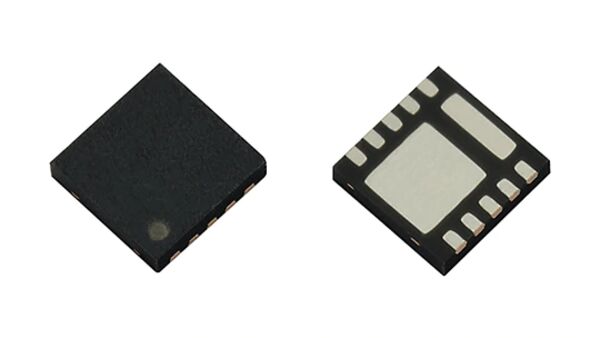
Toshiba Releases MOSFET Gate Driver Switch IPD for Automotive ECUs
"Toshiba Electronic Devices & Storage Corporation (“Toshiba”) has launched “TPD7107F,” a gate driver switch IPD[1] that controls the conduction and shut-off of current supplied to automotive electronic control units (ECUs), such as junction boxes and body control modules. Shipments start today. Combined with Toshiba’s automotive low On-resistance N-channel MOSFET[2], TPD7107F can form a high-side switch suitable for load current. As an electronic switch, free from the contact wear of mechanical relays, the new IPD can help to reduce the size and power consumption of automotive ECUs, and to make them maintenance-free. By delivering enhanced functions that support the high reliability required for automotive ECUs—a self-protection function and various built-in diagnostic functions that are output to the microcontroller—the new IPD monitors load operation and the MOSFET to which it is connected. In abnormal operation, it rapidly turns off the MOSFET[3] to reduce the load on the MOSFET." [...]

Teensy 4.1 Released
"Teensy 4.1 is now available with access more I/O and memory expansion. Teensy 4.1 features a 10/100 Mbit Ethernet PHY. The Ethernet port also has IEEE1588 precision packet timestamping. Fast Ethernet opens up possibility for low latency & high bandwidth Artnet LED projects, streaming audio, open sound control and other Ethernet-based protocols that were difficult to accomplish with a traditional SPI-based Ethernet shield. Traditionally use of Ethernet in a project has involved a choice of single board computers with high bandwidth Ethernet using systems not designed for low latency tasks, versus microcontrollers designed for real-time tasks but with slow Ethernet or lacking performance to handle Ethernet’s speed. Teensy 4.1 with a Cortex-M7 processor at 600 MHz opens up the possibility to use the high bandwidth and low latency of Ethernet on a microcontroller designed for real-time tasks." [...]
Ciência e Tecnologia

Laser loop couples quantum systems over a distance
"For the first time, researchers have succeeded in creating strong coupling between quantum systems over a greater distance. They accomplished this with a novel method in which a laser loop connects the systems, enabling nearly lossless exchange of information and strong interaction between them. In the scientific journal Science, the physicists from the University of Basel and University of Hanover reported that the new method opens up new possibilities in quantum networks and quantum sensor technology. Quantum technology is currently one of the most active fields of research worldwide. It takes advantage of the special properties of quantum mechanical states of atoms, light, or nanostructures to develop, for example, novel sensors for medicine and navigation, networks for information processing and powerful simulators for materials sciences. Generating these quantum states normally requires a strong interaction between the systems involved, such as between several atoms or nanostructures." [...]
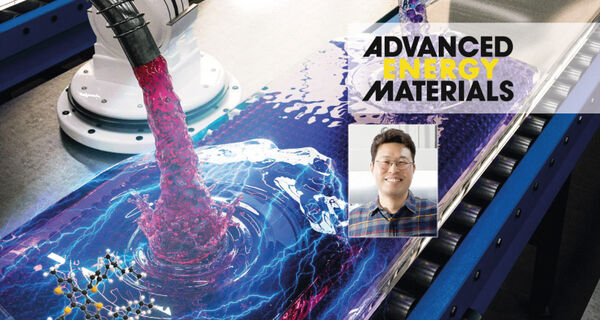
Enhancing Quantum Dot Solar Cell Efficiency to 11.53%
"A novel technology that can improve the efficiency of quantum dot solar cells to 11.53% has been unveiled. Published in the February 2020 issue of Advanced Energy Materials, it has been evaluated as a study that solved the challenges posed by the generation of electric currents from sunlight by solar cells by enhancing the hole extraction. A research team, led by Professor Sung-Yeon Jang in the School of Energy and Chemical Engineering at UNIST has developed a photovoltaic device that maximizes the performance of quantum dot solar cells by using organic polymers. Solar cells use a characteristic of which electrons and holes are generated in the absorber layer. The free free electrons and hole then move through the cell, creating and filling in holes. It is this movement of electrons and holes that generate electricity." [...]
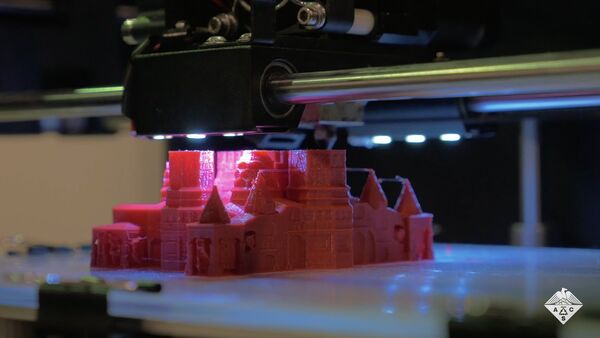
Expandable foam for 3D printing large objects
"It’s a frustrating limitation of 3D printing: Printed objects must be smaller than the machine making them. Huge machines are impractical for printing large parts because they take up too much space and require excessive time to print. Now, a new material reported in ACS Applied Materials & Interfaces can be used to 3D print small objects that expand upon heating. The foam could find applications in architecture, aerospace and biomedicine. One type of 3D printing, stereolithography, creates objects by exposing sequential layers of light-sensitive resins to patterns of light, which cure the polymer into the desired shape. Large objects can be created with specialized stereolithography machines, but they are usually made by fastening smaller 3D-printed components together." [...]
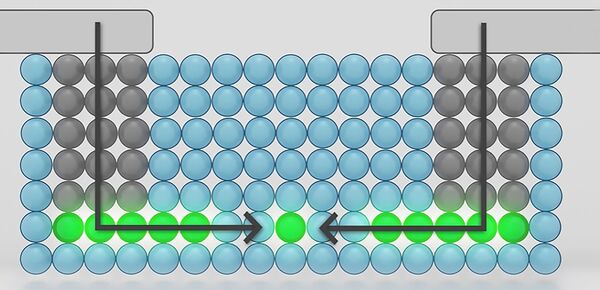
NIST Scientists Create New Recipe for Single-Atom Transistors
"Linking multiple copies of these devices may lay the foundation for quantum computing. Once unimaginable, transistors consisting only of several-atom clusters or even single atoms promise to become the building blocks of a new generation of computers with unparalleled memory and processing power. But to realize the full potential of these tiny transistors — miniature electrical on-off switches — researchers must find a way to make many copies of these notoriously difficult-to-fabricate components. Now, researchers at the National Institute of Standards and Technology (NIST) and their colleagues at the University of Maryland have developed a step-by-step recipe to produce the atomic-scale devices. Using these instructions, the NIST-led team has become only the second in the world to construct a single-atom transistor and the first to fabricate a series of single electron transistors with atom-scale control over the devices’ geometry. The scientists demonstrated that they could precisely adjust the rate at which individual electrons flow through a physical gap or electrical barrier in their transistor — even though classical physics would forbid the electrons from doing so because they lack enough energy." [...]
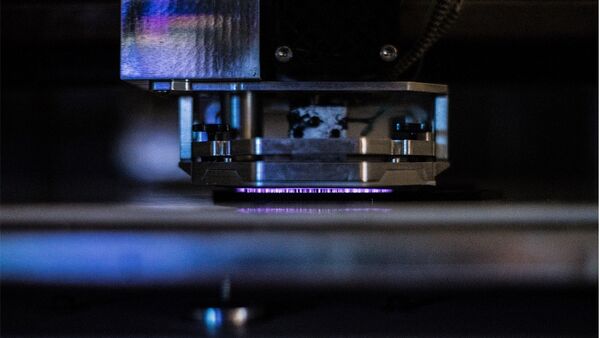
Researchers Invent Technology To Remedy 3D Printing’s ‘Weak Spot’
"Texas A&M and Essentium, Inc. researchers have developed a way to more effectively weld adjacent printed layers together. Allowing users to create objects from simple toys to custom prosthetic parts, plastics are a popular 3D printing material. But these printed parts are mechanically weak — a flaw caused by the imperfect bonding between the individual printed layers that make up the 3D part. Researchers at Texas A&M University, in collaboration with scientists in the company Essentium, Inc. have now developed the technology needed to overcome 3D printing’s “weak spot.” By integrating plasma science and carbon nanotube technology into standard 3D printing, the researchers welded adjacent printed layers more effectively, increasing the overall reliability of the final part. “Finding a way to remedy the inadequate bonding between printed layers has been an ongoing quest in the 3D printing field,” said Micah Green, associate professor in the Artie McFerrin Department of Chemical Engineering. “We have now developed a sophisticated technology that can bolster welding between these layers all while printing the 3D part.” Their findings were published in the February issue of the journal Nano Letters." [...]

ORNL, LANL-developed quantum technologies go the distance
"OAK RIDGE, Tenn., May 12, 2020 — For the second year in a row, a team from the Department of Energy’s Oak Ridge and Los Alamos national laboratories led a demonstration hosted by EPB, a community-based utility and telecommunications company serving Chattanooga, Tennessee. Using an isolated portion of EPB’s fiber-optic network, the team experimented with quantum-based technologies that could improve the cybersecurity, longevity and efficiency of the nation’s power grid. Among other successes, the researchers drastically increased the range that these resources can cover in collaboration with their new industry partner, Qubitekk. The team tested quantum key distribution, or QKD, systems that harness the power of quantum mechanics to authenticate data and encrypt messages with a secret “key.” Using private encryption methods, the key securely transmits “locked” information from one QKD system to another through a “trusted node” that is virtually invulnerable to cyberattacks. “This technology relies not on the mathematical laws that govern modern computer security but on the physical laws of quantum mechanics that do not change over time,” said Raymond Newell, who leads LANL’s quantum communications team. “As a result, we can make security assurances that will remain true indefinitely because they do not rely on assumptions.” Last year, ORNL, LANL and EPB demonstrated that QKD systems could work together seamlessly despite having different underlying hardware and software components, an important step toward eventually incorporating QKD into the grid — which provides electricity to buildings throughout the United States — on a national level." [...]

Transistor sets a new standard for energy efficiency
"Researchers at EPFL’s Nanoelectronic Devices Laboratory (Nanolab), working under Professor Adrian Ionescu, have designed and demonstrated a new type of technology based on 2D semiconducting materials that’s almost as energy-efficient as the human brain. Smartphones, laptops and smartwatches consume vast quantities of energy, yet only around half of this energy is actually used to power important functions. And with billions of these devices in use worldwide, a significant amount of energy goes to waste. Professor Adrian Ionescu and his team at EPFL’s Nanoelectronic Devices Laboratory (Nanolab) have launched a series of research projects in the quest to make transistors more energy-efficient. “The transistor is the most abundant artificial object ever created by humans,” says Prof. Ionescu. “It enables our entire computational infrastructure and the way we interact in real time with portable information processing in the 21st century." [...]
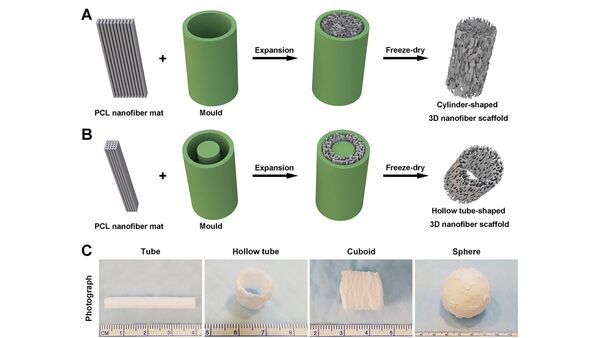
Nanofiber Membranes Transformed Into 3D Scaffolds
"In the movie “Transformers,” cars morph into robots, jets or a variety of machinery. A similar concept inspired a group of researchers to combine gas foaming, which is a blend of chemicals that induces gas bubbling, and 3D molding technologies to quickly transform electrospun membranes into complex 3D shapes for biomedical applications. In Applied Physics Reviews, from AIP Publishing, the group reports on its new approach that demonstrates significant improvements in speed and quality compared with other methods. The work is also the first successful demonstration of formation of 3D neural tissue constructs with an ordered structure through differentiation of human neural progenitor/stem cells on these transformed 3D nanofiber scaffolds. “Electrospinning is a technology to produce nanofiber membranes,” said co-author Jingwei Xie, at the University of Nebraska Medical Center. “The physics principle behind it involves applying an electrical force to overcome the surface tension of a solution to elongate a solution jet into continuous and ultrafine fibers after solvent evaporation.” Due to an intrinsic property of electrospinning, nanofibers are often deposited to form 2D membranes or sheets with dense structures and small pore sizes that are less than the size of cells." [...]

Quantum Brakes in Molecules
"Physicists have measured the flight times of electrons emitted from a specific atom in a molecule upon excitation with laser light. This has enabled them to measure the influence of the molecule itself on the kinetics of emission. Photoemission – the release of electrons in response to excitation by light – is one of the most fundamental processes in the microcosm. The kinetic energy of the emitted electron is characteristic for the atom concerned, and depends on the wavelength of the light employed. But how long does the process take? And does it always take the same amount of time, irrespective of whether the electron is emitted from an individual atom or from an atom that is part of a molecule?" [...]

King's physicists generate 3-dimensional colour images with 2-dimensional nanostructured surfaces
"As part of an international collaboration with a research group from Southern University of Science and Technology in Shenzhen (China), researchers from the Department of Physics have demonstrated the projection of colour 3D images using 2D nanostructured surfaces, called metasurfaces, that have potential to become the next generation security feature for anti-counterfeiting applications. Building on their expertise in design and characterisation of plasmonic nanostructures with tailored optical properties, Professor Anatoly Zayats (Head of the King’s Photonics & Nanotechnology group), Dr Diane Roth (Research Associate), Dr Alexander Minovich (former The Royal Society Newton International Fellow at King’s) and colleagues in China have developed a 2D layered nanostructure, capable of reflecting white light in a controlled direction, which is different from the direction of the conventional mirror reflection. With the ability to manipulate the light reflection in a very precise way, the researchers trick the eye to perceive a 2D structure as a real 3D object. In their study, the research team encoded an image of a 3D cube onto the metasurface as a proof of concept. The projected image of the cube reacts to variations in the direction of illumination or viewing angle to produce an appropriate change in the brightness of the cube faces. Unlike typical holograms, metasurfaces manipulate the reflection of all colours of light simultaneously, so they appear as a realistic 3D object in any light condition and from any angle of observation." [...]
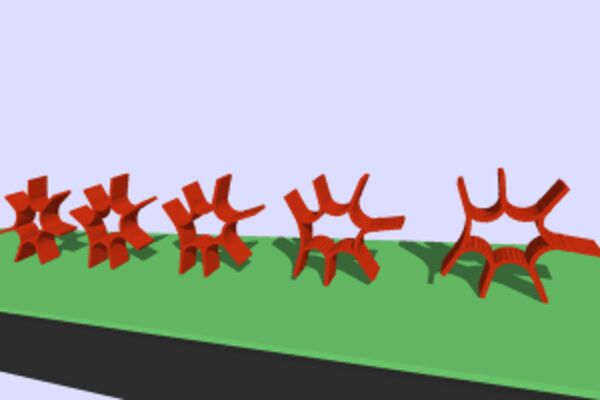
UCLA and Carnegie Mellon Researchers Develop First Real-Time Physics Engine for Soft Robotics
"Motion picture animation and video games are impressively lifelike nowadays, capturing a wisp of hair falling across a heroine’s eyes or a canvas sail snapping crisply in the wind. Collaborators from the University of California, Los Angeles (UCLA) and Carnegie Mellon University have adapted this sophisticated computer graphics technology to simulate the movements of soft, limbed robots for the first time. The findings were published May 6 in Nature Communications in a paper titled, “Dynamic Simulation of Articulated Soft Robots.” “We have achieved faster than real-time simulation of soft robots, and this is a major step toward such robots that are autonomous and can plan out their actions on their own,” said study author Khalid Jawed, an assistant professor of mechanical and aerospace engineering at UCLA Samueli School of Engineering. “Soft robots are made of flexible material which makes them intrinsically resilient against damage and potentially much safer in interaction with humans. Prior to this study, predicting the motion of these robots has been challenging because they change shape during operation.” Movies often use an algorithm named discrete elastic rods (DER) to animate free-flowing objects. DER can predict hundreds of movements in less than a second." [...]
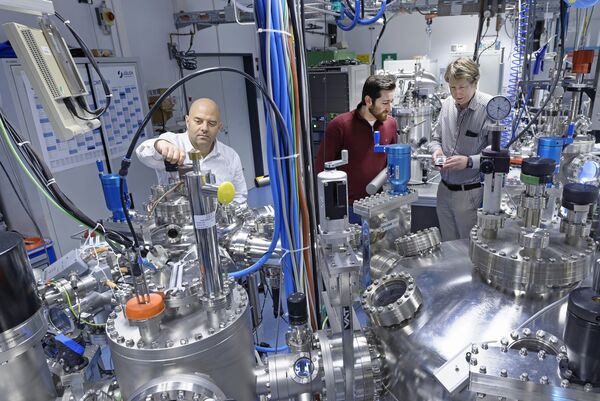
Artificial Synapses on Design
"Tiny material differences are crucial for the functional behaviour of memristive devices Scientists around the world are intensively working on memristive devices, which are capable in extremely low power operation and behave similarly to neurons in the brain. Researchers from the Jülich Aachen Research Alliance (JARA) and the German technology group Heraeus have now discovered how to systematically control the functional behaviour of these elements. The smallest differences in material composition are found crucial: differences so small that until now experts had failed to notice them. The researchers’ design directions could help to increase variety, efficiency, selectivity and reliability for memristive technology-based applications, for example for energy-efficient, non-volatile storage devices or neuro-inspired computers. Memristors are considered a highly promising alternative to conventional nanoelectronic elements in computer Chips. Because of the advantageous functionalities, their development is being eagerly pursued by many companies and research institutions around the world." [...]
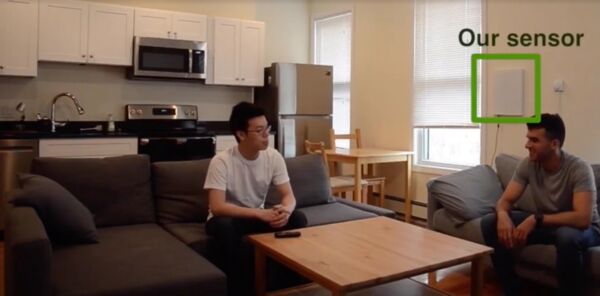
What can your dishwasher tell you about your health?
"For many of us, our microwaves and dishwashers aren’t the first thing that come to mind when trying to glean health information, beyond that we should (maybe) lay off the Hot Pockets and empty the dishes in a timely way. But we may soon be rethinking that, thanks to new research from MIT’s Computer Science and Artificial Intelligence Laboratory (CSAIL). The system, called “Sapple,” analyzes in-home appliance usage to better understand our health patterns, using just radio signals and a smart electricity meter. Taking information from two in-home sensors, the new machine learning model examines use of everyday items like microwaves, stoves, and even hair dryers, and can detect where and when a particular appliance is being used. For example, for an elderly person living alone, learning appliance usage patterns could help their healthcare professionals understand their ability to perform various activities of daily living, with the goal of eventually helping advise on healthy patterns. These can include personal hygiene, dressing, eating, maintaining continence, and mobility." [...]

Making Quantum ‘Waves’ in Ultrathin Materials
"Study co-led by Berkeley Lab reveals how wavelike plasmons could power up a new class of sensing and photochemical technologies at the nanoscale Wavelike, collective oscillations of electrons known as “plasmons” are very important for determining the optical and electronic properties of metals. In atomically thin 2D materials, plasmons have an energy that is more useful for applications, including sensors and communication devices, than plasmons found in bulk metals. But determining how long plasmons live and whether their energy and other properties can be controlled at the nanoscale (billionths of a meter) has eluded many. Now, as reported in the journal Nature Communications, a team of researchers co-led by the Department of Energy’s Lawrence Berkeley National Laboratory (Berkeley Lab) – with support from the Department of Energy’s Center for Computational Study of Excited-State Phenomena in Energy Materials (C2SEPEM) – has observed long-lived plasmons in a new class of conducting transition metal dichalcogenide (TMD) called “quasi 2D crystals.” To understand how plasmons operate in quasi 2D crystals, the researchers characterized the properties of both nonconductive electrons as well as conductive electrons in a monolayer of the TMD tantalum disulfide. Previous studies only looked at conducting electrons. “We discovered that it was very important to carefully include all the interactions between both types of electrons,” said C2SEPEM Director Steven Louie, who led the study." [...]

Visualizing the world beyond the frame
"Researchers test how far artificial intelligence models can go in dreaming up varied poses and colors of objects and animals in photos. Most firetrucks come in red, but it’s not hard to picture one in blue. Computers aren’t nearly as creative. Their understanding of the world is colored, often literally, by the data they’ve trained on. If all they’ve ever seen are pictures of red fire trucks, they have trouble drawing anything else. To give computer vision models a fuller, more imaginative view of the world, researchers have tried feeding them more varied images." [...]

Lighting the path for cells
"ETH researchers have developed a new method in which they use light to draw patterns of molecules that guide living cells. The approach allows for a closer look at the development of multicellular organisms – and in the future may even play a part in novel therapies. Highly complex organisms can arise from a single cell, which is one of the true miracles of nature. Substances known as morphogens have an important role in this development, namely by signalling to cells where they should go and what they should do. These signal molecules guide biological processes such as the formation of body axes or the wiring of the brain. To investigate such processes in more detail, researchers have to be able to position the signal molecules among living cells in three-dimensional space." [...]
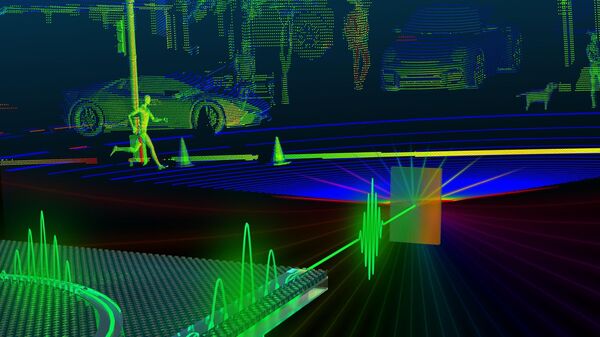
Speeding up long-range coherent LiDAR
"LiDAR is a technique used for measuring distances with laser light. In a study published in Nature, researchers at EPFL show a new way to speed up a type of LiDAR engine by using photonic circuits. Light detection and ranging (LiDAR) comprised an array of techniques using laser light to measure distances by multiplying the time delay between transmitted and received optical signals with the speed of light. Modern 3D LiDAR sensors combine high lateral/vertical and radial resolution, and are key components in the ongoing revolution of level 4 and 5 self-driving cars. The prominence of 3D LiDAR sensing has its roots in 2007 DARPA autonomous driving challenge with the introduction of the first Velodyne spinning laser array sensors measuring up to 128 laser lines in parallel. Most modern LiDAR sensors rely on the time-of-flight operation principle where short pulses or pulse patterns are emitted from the sensor aperture and the power of back-reflected light is detected using a square-law photodetector." [...]
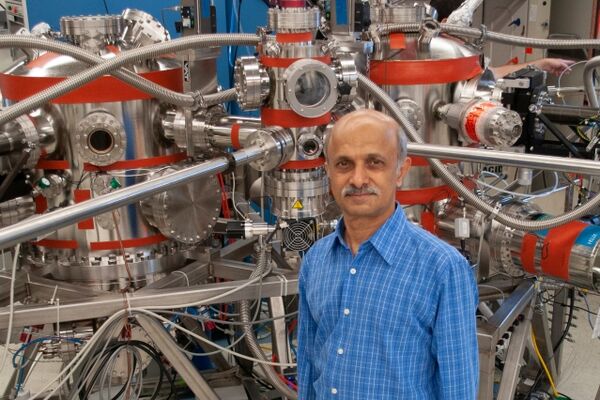
Exploring new paths to future quantum electronics
"Jagadeesh Moodera and colleagues to investigate interface-driven phenomena in quantum materials in the quest for energy-efficient quantum electronics. When ultrathin layered materials are coupled with other quantum materials having different properties, the resulting interface could produce a new quantum phenomenon — and new properties of the hybrid system could be unprecedented. This rich interface phenomenon is the topic of new investigation by Jagadeesh Moodera and his group at MIT's Plasma Science and Fusion Center. “Surface and interface play pivotal roles in many of the recently discovered quantum phenomena in condensed matter physics,” Moodera points out. “Investigating the complex interface behavior when two quantum systems are coupled is a treasure island to be explored for new discoveries and for advancing the field.” Moodera’s group has extensive experience studying quantum interfaces, having discovered in 2016 that coupling ultrathin layers of topological insulators (TI) — where electrons flow freely but only on the surface — with ferromagnetic or superconducting layers dramatically affects the behavior of each layer. Most recently they've explored the surface superconductivity in nanostructures of gold in proximity to the superconductor vanadium and a ferromagnetic insulator, in the quest to create the enigmatic Majorana fermion pair." [...]

Future information technologies: 3D Quantum Spin Liquid revealed
"Quantum Spin Liquids are candidates for potential use in future information technologies. So far, Quantum Spin Liquids have usually only been found in one or two dimensional magnetic systems only. Now an international team led by HZB scientists has investigated crystals of PbCuTe2O6 with neutron experiments at ISIS, NIST and ILL. They found spin liquid behaviour in 3D, due to a so called hyper hyperkagome lattice. The experimental data fit extremely well to theoretical simulations also done at HZB. IT devices today are based on electronic processes in semiconductors." [...]

Researchers map tiny twists in “magic-angle” graphene
"Results could help designers engineer high-temperature superconductors and quantum computing devices. Made of a single layer of carbon atoms linked in a hexagonal honeycomb pattern, graphene’s structure is simple and seemingly delicate. Since its discovery in 2004, scientists have found that graphene is in fact exceptionally strong. And although graphene is not a metal, it conducts electricity at ultrahigh speeds, better than most metals. In 2018, MIT scientists led by Pablo Jarillo-Herrero and Yuan Cao discovered that when two sheets of graphene are stacked together at a slightly offset “magic” angle, the new “twisted” graphene structure can become either an insulator, completely blocking electricity from flowing through the material, or paradoxically, a superconductor, able to let electrons fly through without resistance. It was a monumental discovery that helped launch a new field known as “twistronics,” the study of electronic behavior in twisted graphene and other materials." [...]

To climb like a gecko, robots need toes
"Robots with toes? Experiments suggest that climbing robots could benefit from having flexible, hairy toes, like those of geckos, that can adjust quickly to accommodate shifting weight and slippery surfaces. Biologists from the University of California, Berkeley, and Nanjing University of Aeronautics and Astronautics observed geckos running horizontally along walls to learn how they use their five toes to compensate for different types of surfaces without slowing down. “The research helped answer a fundamental question: Why have many toes?” said Robert Full, UC Berkeley professor of integrative biology. As his previous research showed, geckos’ toes can stick to the smoothest surfaces through the use of intermolecular forces, and uncurl and peel in milliseconds. Their toes have up to 15,000 hairs per foot, and each hair has “an awful case of split ends, with as many as a thousand nano-sized tips that allow close surface contact,” he said." [...]
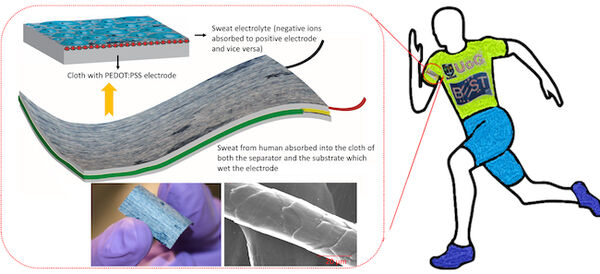
Working Up A Sweat Could Power Future Wearable Devices
"A new generation of wearable devices could be powered by human sweat instead of conventional, environmentally-unfriendly batteries, scientists say. In a new paper published today in the journal Advanced Materials, engineers from the Bendable Electronics and Sensing Technologies (BEST) group at the University of Glasgow describe how working up a sweat could be enough to generate power for exercise monitors and other electronic devices in the future. They have developed a new type of flexible supercapacitor which replaces the electrolytes found in conventional batteries with sweat. It can be fully charged with as little as 20 microlitres of fluid and is robust enough to survive 4,000 cycles of the types of flexes and bends it might encounter in real-world use. It works by coating polyester cellulose cloth in a thin layer of a polymer known as poly(3,4-ethylenedioxythiophene) polystyrene sulfonate – or PEDOT:PSS. The team chose the polyester cellulose cloth because it is particularly absorbent, and PEDOT:PSS because it offers a useful combination of flexibility, high conductivity and environmental friendliness." [...]
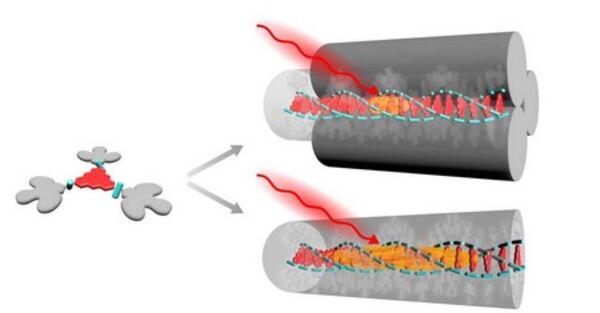
Transporting energy through a single molecular nanowire
"Plants and photosynthetic bacteria catch sunlight via molecular antennas, which then transfer the energy to a reaction centre with minimal losses. Scientists would like to make molecular wires that can transfer energy just as efficiently. Scientists at the University of Groningen created tiny fibres by stacking certain molecules together. Single fibres transport energy, although they sometimes malfunction. Creating bundles of fibres (as is done with copper wiring) was thought to be the solution but this turned out not to be the case. Energy moves fast when spread out across several molecules." [...]

Hayabusa2 reveals more secrets from Ryugu
"In February and July of 2019, the Hayabusa2 spacecraft briefly touched down on the surface of near-Earth asteroid Ryugu. The readings it took with various instruments at those times have given researchers insight into the physical and chemical properties of the 1-kilometer-wide asteroid. These findings could help explain the history of Ryugu and other asteroids, as well as the solar system at large. When our solar system formed around 5 billion years ago, most of the material it formed from became the sun, and a fraction of a percent became the planets and solid bodies, including asteroids. Planets have changed a lot since the early days of the solar system due to geological processes, chemical changes, bombardments and more. But asteroids have remained more or less the same as they are too small to experience those things, and are therefore useful for researchers who investigate the early solar system and our origins." [...]
Documentação
A documentação é parte essencial do processo de aprendizagem e a Internet além de artigos interessantes de explorar também tem alguma documentação em formato PDF interessante de ler. Todos os links aqui apresentados são para conteúdo disponibilizado livremente pelo editor do livro.
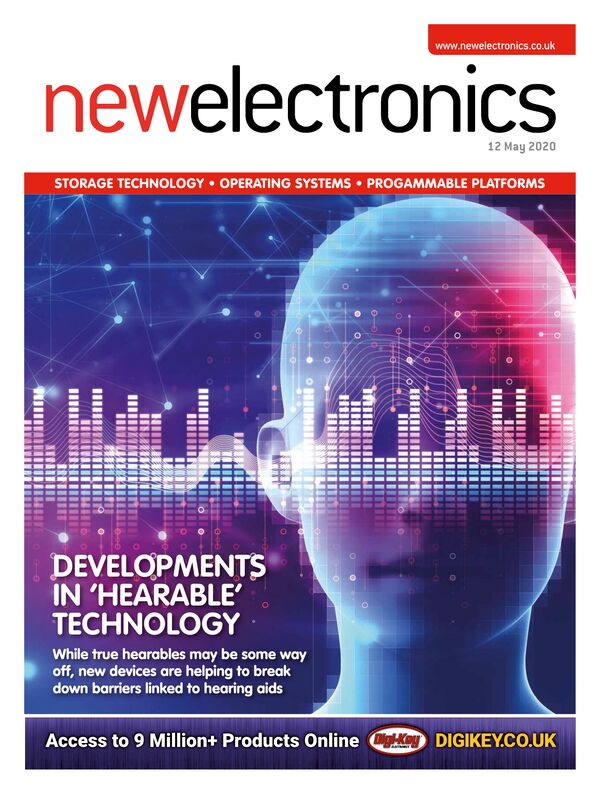
newelectronics 12 Maio 2020
"New Electronics is a fortnightly magazine focusing on technological innovation, news and the latest developments in the electronics sector. Downloadable as a digital page turner or pdf file, or offered as a hard copy, the New Electronics magazine is available in a format to suit you. " [...]
Projetos Maker
Diversos Projetos interessantes.

IR Control of IKEA FYRTUR Shades
"I finally got my hands on some IKEA FYRTUR motorized shades and wanted to control them using an IR remote. This is a niche application but I thought it might be useful for someone wanting to learn how to use the Arduino's GPIO pins as a simple low-voltage relay. " [...]

Space Hinvaders
"A micro game with LED matrix where the pixels used for the entire game are about those of a single sprite of the original invader. I really like old video games, and I had never found a space invader style game on Arduino that used Dot matrix LED display. One day seeing one of these displays I said to myself: I could make a space invader in a space approximately equal to what was originally occupied by a single sprite of an invader. It would be great. I got started and tried it, and in spite of all the limitations I managed to do something playable and at the same time fascinating considering the limits of the hardware.As you can see on the title is named Space Hinvaders, because is a Survival Hacking (SH) creation, so altered original Space Invader name according to SH Initials. Have fun !!!" [...]
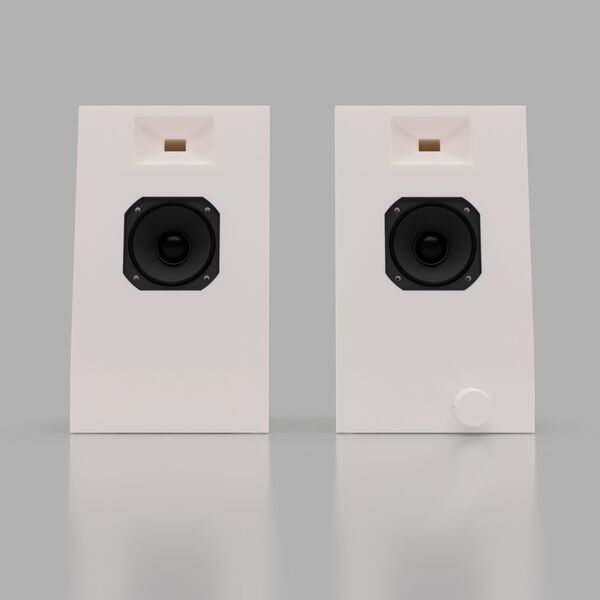
3D printed Bluetooth speakers - LittleJet!
"My goal is to design a 3D printed standalone speaker based on transmission line theory Hello to everyone! Today I am happy because I can finally introduce you to this project that I have been working on for many months now. These are 3D printable speakers connectable with a cable to a PC, or using the Bluetooth of your notebook or smartphone. They have a lot of acoustic power, pushing out without distortion 10 watts RMS (in general the computer speakers are 3 watts! ), and thanks to the hi-quality full-range driver, they rock! They are also perfect to keep in the room to listen to music as you do with that little portable Bluetooth speaker, but I swear, these speakers sound much better." [...]
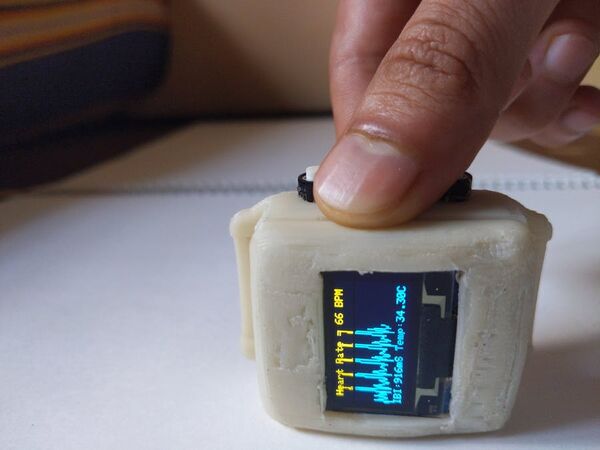
Raksha- Personal healthcare wearable
"Personal healthcare wearable which can monitor and detect anomaly in vitals As technology is transitioning in a swift manner, there are many inventions made to make our lives better. High tech health care system is now a touch away. Telemedicine is one of the major implementations where one can talk to their doctor via video call etc, and tell their symptoms to get the solution. Wearable health monitoring technologies, including smartwatches and fitness trackers, have attracted considerable consumer interest over the past few years. Not only has this interest has been mainly encouraged by the rapid demand growth in the wearable technology market for the ubiquitous, continuous, and pervasive monitoring of vital signs, but it has been leveraged by the state-of-the-art technological developments in sensor technology and wireless communications. The wearable technology market was valued at over $13.2 billion by the end of 2016 and its value is forecast to reach $34 billion by the end of 2020." [...]
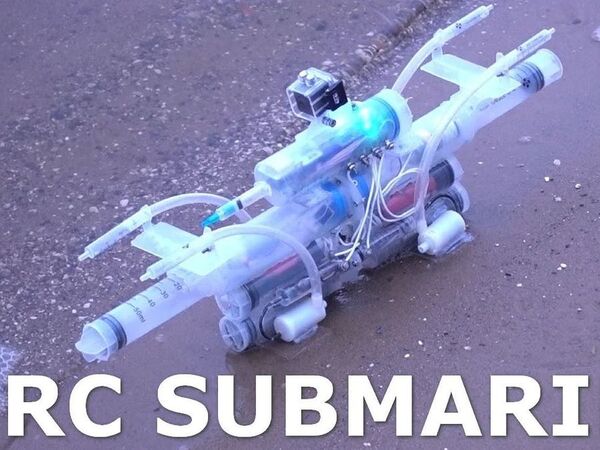
RC Submarine
"How to make a radio-controlled submarine with a video camera Everyone can build a submarine. To assemble this design from a tool, only a screwdriver and a hot glue gun were required. The design consists of several modules: module with electronics 2 cylinders for storage of compressed air 2 ballast tanks (bow and stern) 2 capacities for battery 2 tanks for ballast to adjust the buoyancy. As propulsors, 4 micropumps for water were used. Electronics is assembled on the basis of the Russian version of the Arduino board called Iskra Nano Pro. The board is made on the AT Mega 328PB microcontroller." [...]
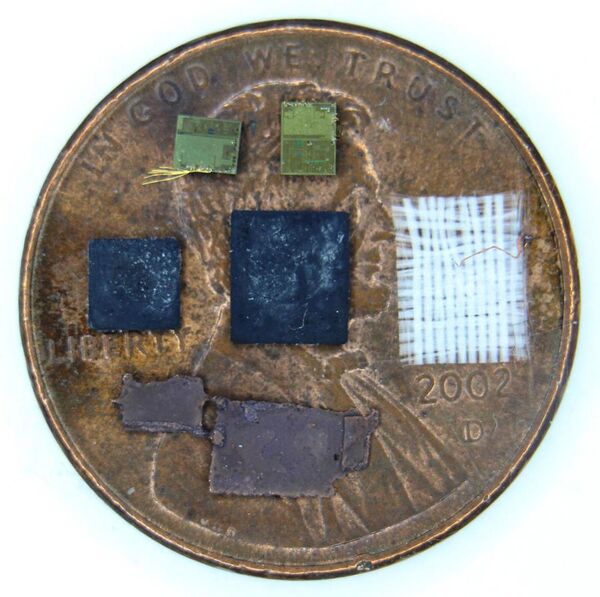
Tiny transformer inside: Decapping an isolated power transfer chip
"I saw an ad for a tiny chip1 that provides 5 volts2 of isolated power: You feed 5 volts in one side, and get 5 volts out the other side. What makes this remarkable is that the two sides can have up to 5000 volts between them. This chip contains a DC-DC converter and a tiny isolation transformer so there's no direct electrical connection from one side to the other. I was amazed that they could fit all this into a package smaller than your fingernail, so I decided to take a look inside. I obtained a sample chip from Texas Instruments. Robert Baruch of project5474 decapped this chip for me by boiling it in sulfuric acid at 210 °C." [...]

3D modeling off-the-shelf PCBs in KiCAD and designing enclosures for them
"Usually when ordering ready PCB modules, we rarely want to use them as-is. That's why we design enclosures for them (or better yet, find it designed by someone else and just print - but I'm not going to cover it here). When designing an enclosure, it's immensely helpful to have a model of the board to do test fittings. My usual approach to this problem was: find or create a 3D board for the model. Creating a model for the PCB involves: copying the board outline and every relevant part of its geometry, for each component on it you search GrabCAD and the like, and in case of coming up short you DIY, Align every single component to the board. load it into CAD software and design the enclosure around the model." [...]
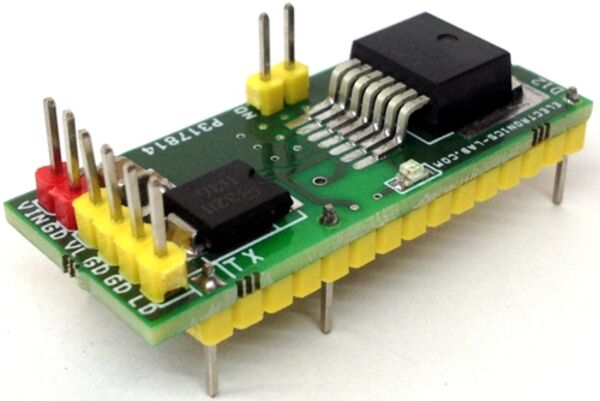
2.7A PWM Valve/Solenoid Driver Arduino Nano Shield
"This Arduino shield helps to drive various loads like a solenoid, valve, motor, inductive actuator, heater, and bulb. A wide supply range 8V-60V and a load current of 2.7A allows it to be used with a variety of actuators. The board can be used as a stand-alone driver or it can be controlled by Arduino Nano. DRV102 is the heart of the project which is a high-side power switch employing a pulse-width modulated (PWM) output. Its rugged design is optimized for driving electromechanical devices such as valves, solenoids, relays, actuators, and positioners. The circuit is also ideal for driving thermal devices such as heaters and lamps." [...]
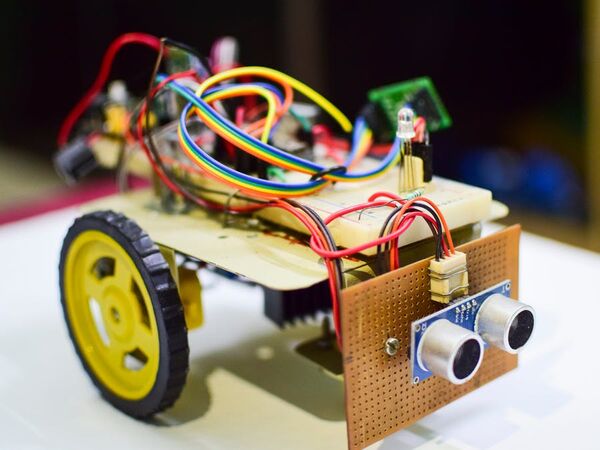
Bluetooth Controlled Obstacle Avoidance Robot
"This project uses mobile phone to communicate with a robot via bluetooth. It also senses obstacles and stops to avoid collision. The project uses a mobile phone to communicate with a robot via bluetooth. I always wanted to build a robot and control it via mobile phone. After a long gap of more than 12 years, I took up the task of building a robot and operate it. This is also my first project in the Arduino Project Hub." [...]
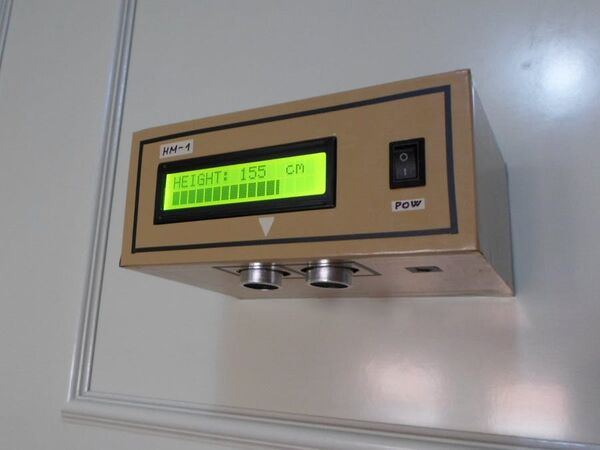
DIY Arduino Height Measuring Machine
"A practical device for automatic measuring human height. When I noticed that my kids were measuring their height every day, I got the idea to make such a device. To find out your height, all you have to do is stand under the device and activate a sound that indicates that your height has been measured. It is very easy to build and consist only a few components: -Arduino Nano -HC SR04 ultrasonic sensor -LCD display -Buzzer -Battery Now let's explain how it works: First we need to install the device with the help of double-sided adhesive at a certain height, which is previously defined in the code, and is marked with the letter H on the picture" [...]

cyberDCK: a CircuitPython Anatidae
"Whats portable, water resistant and always up for adventure:duck + cyber deck computer = cyberDCK A self-contained computer that can edit and run python files, with USB keyboard input and a display. And its shaped like a duck: a disaster-recovery duck. In short: cyberDCK can edit and run CircuitPython files and quack at the same time. The line of distinction between microcontroller and computer continues to blur. Although our mind and language struggles to define what is and isn't a computer, the definition must be left for the dictionary. No matter the word used, the main objective shall be to understand: Does this direction of progress actually simplify and accelerate development?" [...]
Make It Glow: How to Solder NeoPixels, A Beginner's Guide
"This guide is for beginners who are ready to take the next step in DIY electronics: putting that soldering iron to use to add NeoPixel or other addressable LED lights to your project. You don't have to be able to solder to use NeoPixels! Here is a beginner tutorial that shows how to use NeoPixels with no soldering: Make it Glow - Your First NeoPixel Project However, there are times when soldering is really the best option. If you want to use NeoPixel rings, or individual pixels, or create more elaborate or complicated designs with multiple strips, there's really no way to do it without soldering. The good news: it's not as hard as you think! There are a fair number of tools to acquire, but once you've got your station set up, a whole world of creative possibilities will open up for you." [...]

Wi-Fi Device Scanner w/ Raspberry Pi
"Keep track of your phone, tablet, laptop, and other wireless devices using a Raspberry Pi! Keep track of your phone, tablet, laptop, and other wireless devices using a Raspberry Pi! The more Raspberry Pi’s you have, the better you can monitor your home for the movement of your devices. Once you have all the Pi’s set up, send that data to an IoT platform to record and visualize your house and the locations of all your wireless devices! " [...]
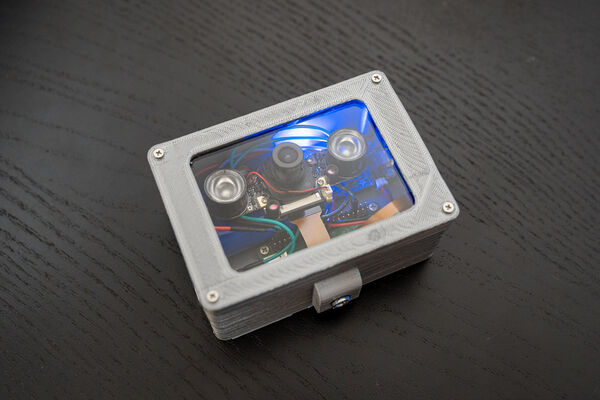
Building a Raspberry Pi Security Camera
"Security cameras seem to be have gotten pretty popular in the last couple of months. I thought I’d share how I put together one using a Raspberry Pi Zero W and some additional components. The device has the following features: Powered by rechargeable battery. Battery charges via USB. Motion activated video (and photo) recording. IR LED equipped (night vision recording)." [...]

ESP32 Wireless Mesh ( Made Easy with PainlessMesh )
"There's nothing more simple than the concept of a wireless mesh network... but there's nothing more complex than building such a mesh. A steep learning curve is involved ( and, worst af all, the examples you may find never cover the whole story ) ! Here the steps to build your mesh ( we will cover each separately ): 1) build the mesh between nodes - easy 2) add ota ( wireless ) update of the nodes - intermediate 3) add a bridge ( to the internet ) - intermediate 4) an app ( to access the mesh from anywhere ) - intermediate Let's start from the first step. Parts required ESP32 development boards ( two or more ), I used a ttgo t-display PlatformIO development software ( install from here) PainlessMesh library" [...]
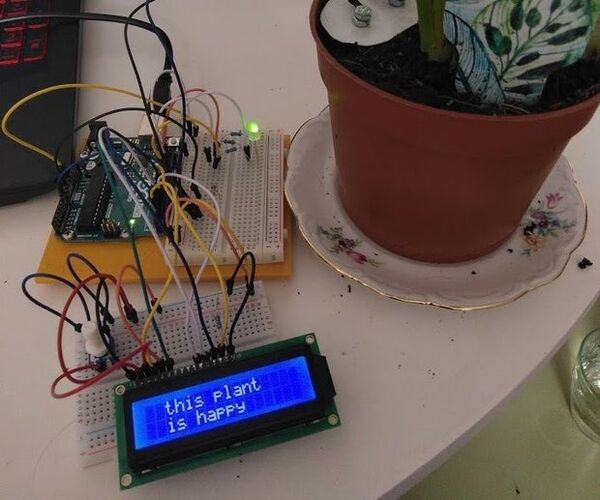
DIY Plant Moisture Sensor With Automatic Watering System
"Hi everyone, Today I'm going to share my first Arduino project with you. I'm a Belgian multimedia student and for the course physical computing and digital making, we had to experiment at home with a project of our choice. I'm a huge plant lover, so why not do something to keep them happy? This project consists of: - A DIY soil moisture sensor with RGB led - A liquid crystal display to indicate the status of your plant - A way to automate the watering of your plant, based on the readings. I learned a lot from this project and I hope I can help you with your challenges. Supplies: What you'll need for this project: - An Arduino UNO - Breadboard (I used two small ones) - Nuts and bolts - A lot of jumper wires - 1x RGB led - 4x 330 ohm resistor (220 ohm is also fine) - 1x 10k ohm resistor - 1x potentiometer - 1x liquid crystal display - 1x Servo Motor - USB cable - hard plastic you put holes through to keep your nuts and bolts about 2.5 centimetres apart." [...]
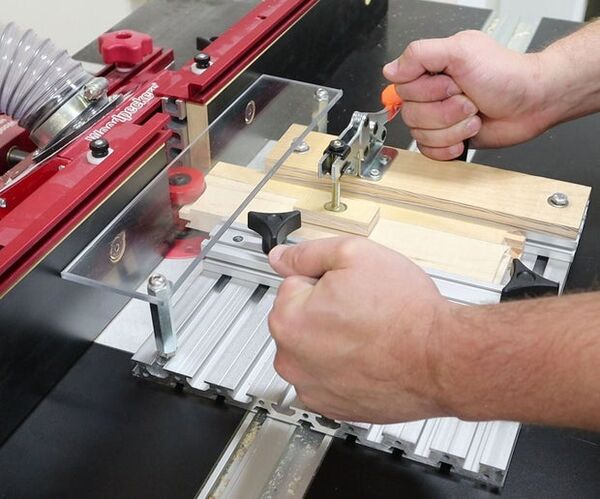
Make a Coping Sled for Your Router Table
"I've made lots of frame and panel doors just using my table saw. You can make a simple clean door using just one tool! However you are limited to making a simple door with no profiled inner edges. To really up your game and achieve a more decorative door you need to use rail and stile router bits to cut the grooves,profiled edges and most importantly the cope cut that allows the rails to "mate" perfectly with the stiles. One of the most useful jigs you can have for the router table is the coping sled. It can help make the cope cut much more efficient, accurate and safe." [...]

DIY Ultraviolet Sterilization Device (UVClean)
"Introduction Hi all and welcome to my very first instructable! In this step by step guide, you will learn how to create your very own ultraviolet sterilization device that can be used as either a wand, or as an automatic sterilization chamber. The device, called the UVClean, uses a special UVC bulb that can sterilize nonporous surfaces in a matter of minutes. Features include: - Sturdy and ergonomic design - Genuine 253.7nm 3.5W UVC bulb - Bi-color OLED display - Passcode protected interface - Comprehensive menu system - Continuous handheld mode, and automatic timer mode IMPORTANT EDITS: I did not know this would blow up so much, but thank you to everyone who has taken a look! I have a few important updates to say based on some thing I have been seeing in the comments. 1) Build this device at your own risk, a lot of people have a lot of things to say about UV safety, and I am certainly not an expert." [...]

Proto - the 3D Printed BattleBot
"BattleBots is one of my favorite TV shows. If you don't know what it is, in a nutshell it's a show where builders create robots to fight one another. As a fan, I have wanted to build my own for a long time. This is the 4th version of my design and after many hours thinking and redesigning, I am proud to showcase my finished bot, Proto. I have put a lot of thought and effort into making this work, with all of its features. I chose to glue down only certain parts to keep my options open if I eventually wanted to swap parts, for example: a faster motor." [...]
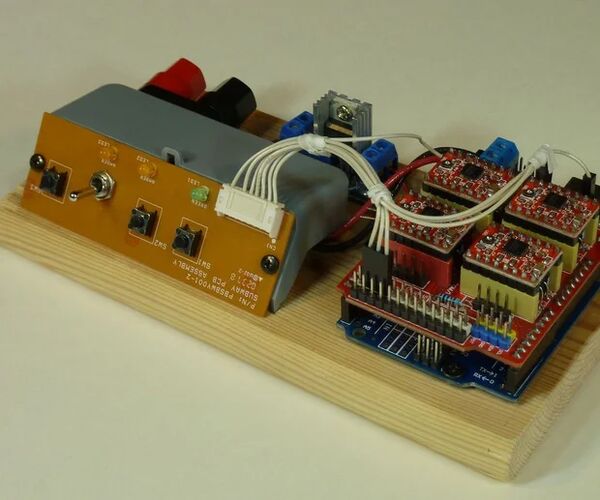
Scrappy Integrated Grbl CNC Controller & Power
"This 'ible describes an integrated unit of CNC motion controller, controller power, switched and fused motor power, ABORT/HOLD/RESUME inputs, and indicator LEDs that is not attached to any single machine. Combining these parts into a simple separate unit simplifies playing with random scrappy machine parts like scrap CD/DVD drive sleds. The major parts cost less than $10, if you don’t already have them lying around waiting for a project, and the rest can be whatever works from found scraps. ...emphasizing “scrap” for the 2020 Scraps Speed Challenge... The Scraps Challenge description says there’s a difference between trash and scrap - without saying much about the difference. ...?..." [...]

Smart Indoor Herb Garden
"In this Instructable, I will show you how I made my smart indoor herb garden! I had a couple of inspirations for this project with the first being that I had some interest in the in home Aerogarden models. Additionally, I had a unused Arduino Mega with a TFT touchscreen shield that had just been sitting in my electronics bin for years. I figured why not try to make my own Aerogarden like herb garden using an Arduino with some of this extra time that I have during quarantine! I ended up going a little extra with the project in that I added moisture sensors to each soil aliquot but it has proven to be useful so far. All in all, I couldn't be happier with how everything turned out!" [...]
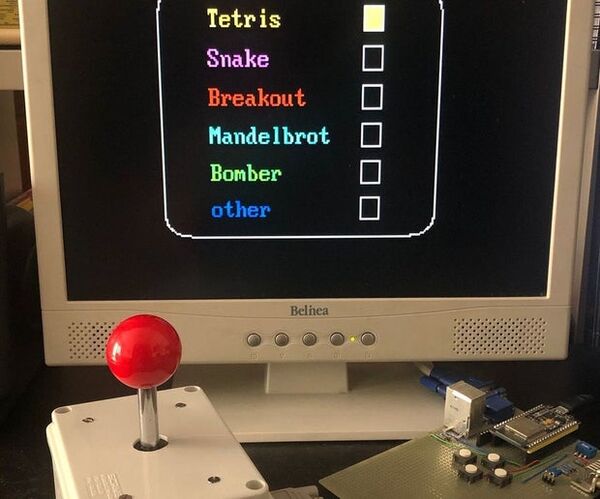
ESP32 VGA Arcade Games and Joystick
"In this instructable I will show how to reproduce four arcade like games - Tetris - Snake - Breakout - Bomber - using an ESP32, with the output for a VGA monitor. The resolution is 320 x 200 pixels, in 8 colors. I have previously done a version with an Arduino Uno (see here), but the resolution was only 120 x 60 pixels, 4 colors, and the Arduino memory was almost full. Thanks to the greater performances of the ESP32, both resolution and playability are higher. Furthermore, there is still plenty of memory available, thus adding new games in the future will be straightforward. I will also show hot to connect a simple joystick trough a RS232 cable." [...]
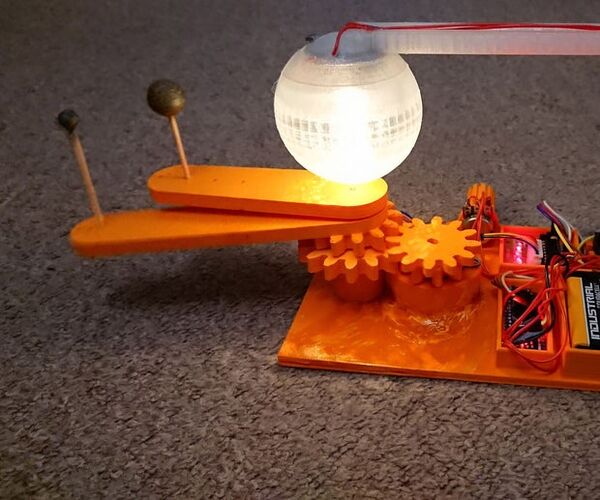
Exoplanet Transit Demo Apparatus
"Since I was a kid, I was into space and astronomy. Recently I have also discovered passion for 3D printing, that allowed me to bring to life astronomy related projects. In this Instructable, I will show you how to make a model of a Star system with planets, and the principle of Exoplanet detection using transit method. Kepler telescope finds planets by looking for tiny dips in the brightness of a star, when a planet crosses in front of it (transit across the star). Thanks to that method astronomers discovered many stars with exoplanets. Quite few of them are Earth type planets." [...]
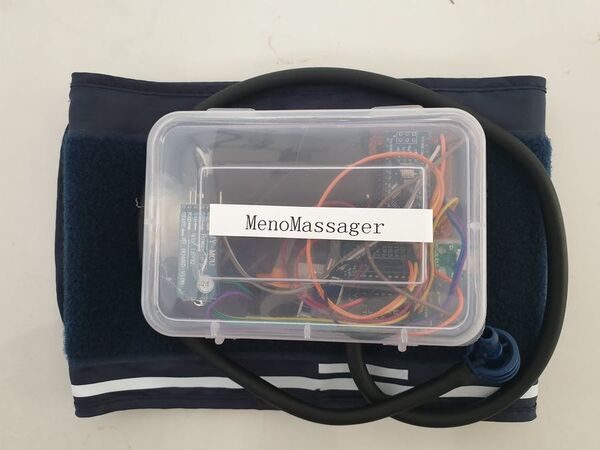
MenoMassager
"A lowcost multi-pressure, multi-speed massager with timer for Joint and muscular pain. Introduction Joint pain and muscle pain are experienced by many women during menopause. I have attempted to build a device that provides relief and helps in reducing joint pain and muscle pain in the hands and legs. I guess every one of us enjoys that moment when a blood pressure reading is taken. The warmth and massaging effect that we feel in our hands when the cuff inflates does feel good right?! The technology is similar!" [...]
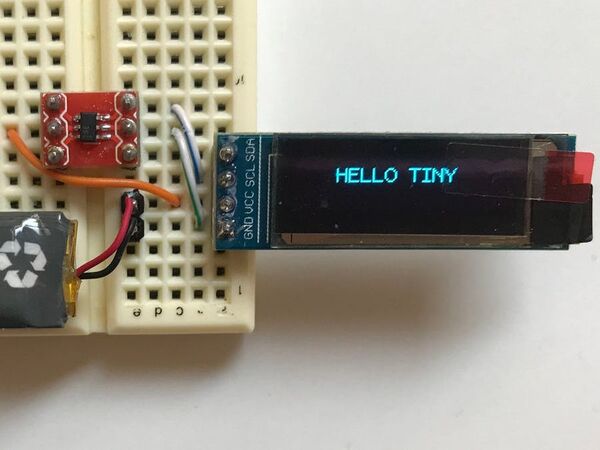
OLED Display Driven by ATtiny10
"Driving an OLED display with an ATtiny10 without using any library to make sure the program fits into the 1kB flash memory. I tried to fit the code to drive an OLED display into an ATtiny10. Is it possible? Yes! But how much space is left to actually make something useful? The problem Playing around with the mighty ATtiny10 I asked myself if it was capable to drive an OLED display." [...]
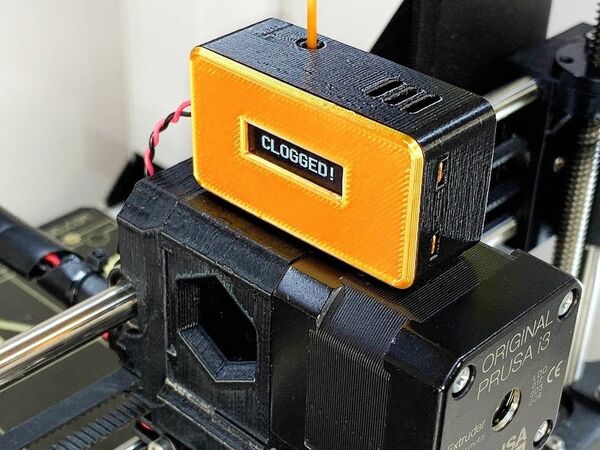
3D Printer Clog Detector
"I designed this small device to be able to alert me in the unfortunate event the nozzle clogs. It does so by monitoring the flow of the filament This small device allows you to detect if the nozzle of your 3D printer clogs at any time while it's running. Jamming does not happen very often but when you are printing large parts it can really save you a lot of time to be alerted as quick as possible. It is attached to the top of the extruder using double-side tape and it is connected to the 12 V DC rail of the hotend fan. I printed mine in ABS to prevent deformation of some parts due to heat since my Prusa is enclosed. " [...]
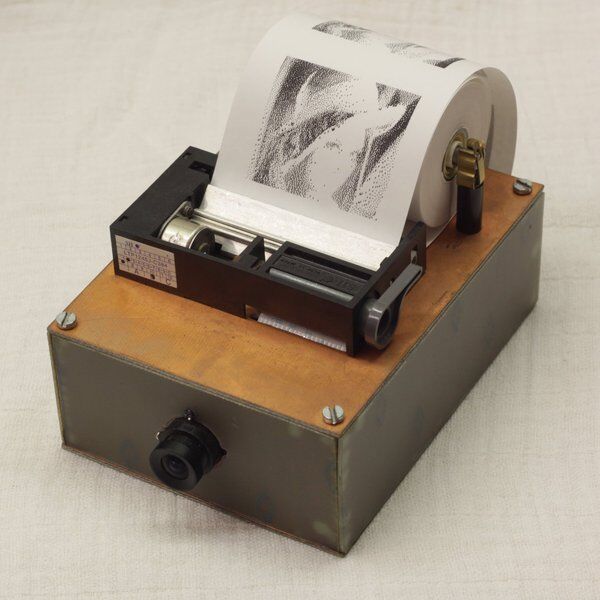
Inverse Thermal Camera
"Converts images to heat - not the other way around This little selfie camera was made as a weekend project almost two years ago. Practically everything came out of my parts bin and so it fit the Making Tech At Home contest perfectly. Although I've already written a blog post about it and published the source code on GitHub, I decided to write a few more words on the subject because the previous documentation doesn't quite demonstrate how hacky it actually was. " [...]
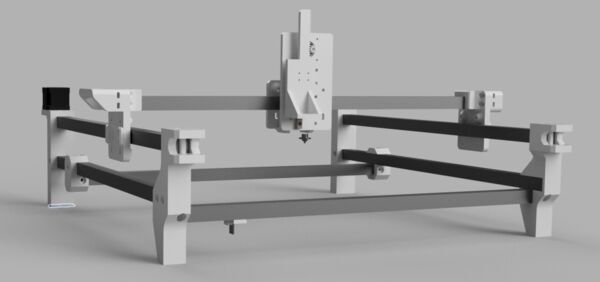
Index PnP
"The Index Pick and Place is an open source pick and place machine to aid in Mid-Scale Manufacturing. This project is under development. It is not currently in a stable state. Development is active and ongoing, but this is not yet a finished design. If you'd like to build one to help find bugs and design issues, please do! The Index is designed to be low-cost enough that someone could buy or build one to support making production runs at home or as a small business." [...]
That's all Folks!



